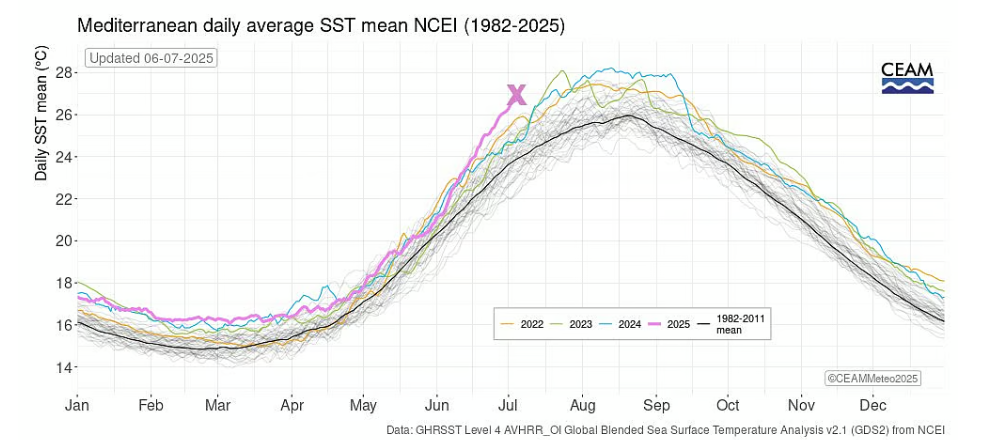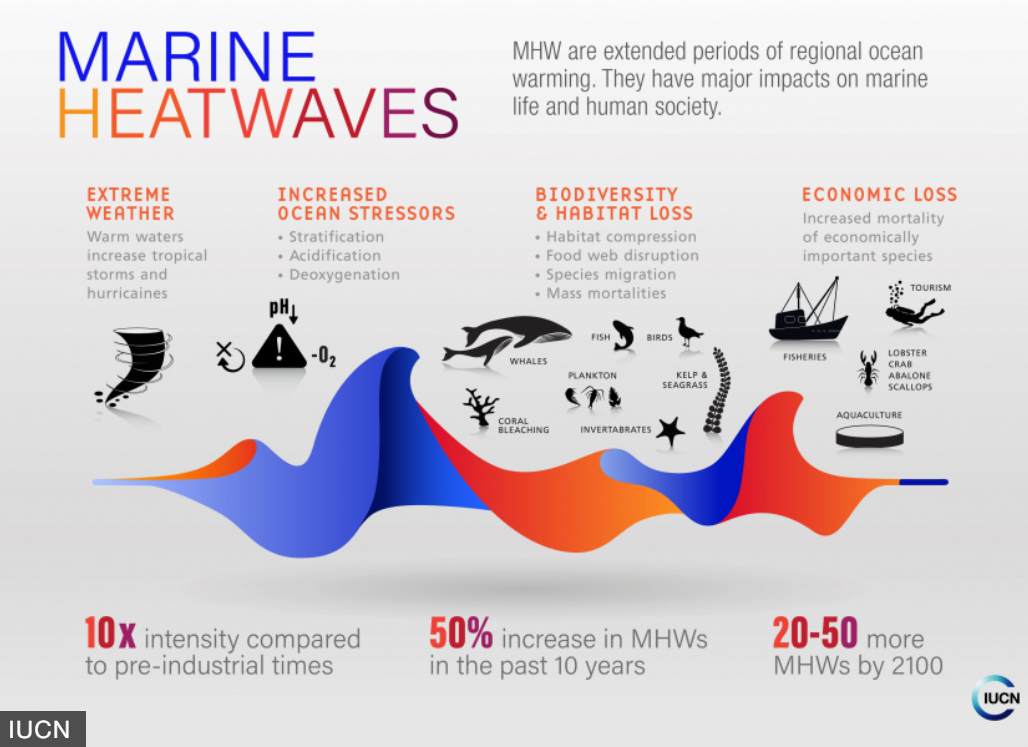Mains: GS I - Important Geophysical Phenomena such as earthquakes, Tsunami, Volcanic activity, cyclone etc., | Changes in critical geographical features (including water-bodies and ice-caps) and in flora and fauna and the effects of such changes.
Recently, Mediterranean Sea has undergone an extremely intense marine heatwave, which scientists say could be a one-in-a-billion climatological event.
|
Causes of Marine Heat Wave |
|

Heat Dome is a large region of high pressure area in the atmosphere, the air sinks downward heating up the air. Unless an external weather system breaks the continuity of the dome, the extreme heat builds up within increasing temperatures, causing both atmospheric and marine heatwaves.
A dew point is the temperature to which ambient air needs to be cooled for it to be 100% saturated.

Reference